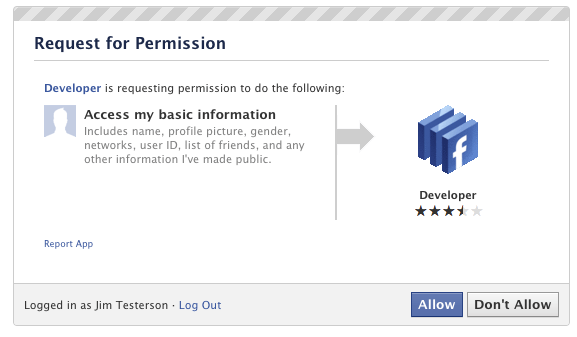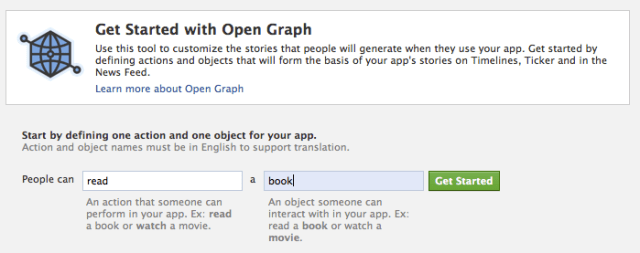
After last year’s f8 keynote, my initial thought was pretty straightforward: I Think Facebook Just Seized Control Of The Internet. Between the Like Button, the Open Graph, and the Open Graph API, I felt like we were shifting from Google being the fabric of the web, to Facebook taking over. A few days later, a now unpaid blogger declared it: The Age of Facebook.
Both of these declarations pissed a lot of people off.
Facebook is the new AOL! Walled garden! The end of open! Blah. Blah. Blah. While everyone else has been busy whining — including plenty of competitors — Facebook has been kicking ass and taking names. And today is proof of that.
For the past year, Facebook has been working on the beautiful re-imagining of the Profile, which they call “Timeline“. I just got it enabled on my account. Going back in time and seeing the past several years of my life displayed in this way is nothing short of profound. Facebook has used software to make something meaningful. Something emotionally powerful.
Because of this impact, some people will undoubtedly hate it. But more will love it. It’s incredible: Facebook has become a tool that’s a reflection of who we are. Just in case it wasn’t painfully obvious already, they’re far more than just another web startup that will flame out in a few years. They are the real deal.
And they just made their competition look rather foolish.
All we’ve heard about in the blogosphere the past few months is how Google+ could take down Facebook. How Google actually did something halfway decent in the social space — watch out Facebook! And look — now Facebook is even copying them!
Please.
I have no doubt that some of Facebook’s little moves over the past few months have been in reaction to Google+. But focusing on that is silly. Those are tiny features compared to what Facebook just unveiled today. They weren’t even worthy of being on stage at f8.
While Google was busy rushing to get a social network that could compete with Facebook out the door, Facebook was thinking about the next phase of social networking. They were building the next Facebook! Google+ does compete with Facebook — the old Facebook. It does not compete with what Facebook launched today.
In that regard, Facebook pulled an Apple. Apple releases something, and everyone in their space rushes to do the same thing. But they never realize that it’s a losing position. They’re skating to where the puck has been. Apple skates to where the puck is going to be. Facebook is skating to where the puck is going to be.
Also reminiscent of Apple: when Facebook unveiled the Like button last year, they were hardly the first to do a button. But they were the first to do a button in the correct way. One click. Done. Suddenly, everyone needed this one-click button.
But while all the competitors were busy making that button, Facebook was busy making the button obsolete. Today’s Open Graph changes represent a world where the button isn’t needed. Sure, it will continue to exist for certain types of content. But it will be more like an on/off switch.
With the new Open Graph, you’re sharing stuff as you do it. You don’t have to think about it. You’re listening to music on Spotify and it’s being shared with your friends automatically in the Facebook Ticker. The only button you hit is “play”.
Obviously, that’s not ideal for all content. But for some of the best content, it’s beyond ideal. The idea of hitting a share button to push your favorite song to Facebook is stupid. Enjoy the music, don’t worry about having to remember to share it. That’s how this should work.
There’s one massive problem in the social space: everyone is competing for the same user time. But most services compete by piling on features that erode that time even quicker. They’re offering up services that if I use, it means I’ll have even less time to actually enjoy life. That’s not a sustainable model. Being “social” online has become far too much work.
Facebook has clearly been thinking about this problem. And now they have a way to tap the power of social without thinking about it. That’s the future of the space. It’s not about needing a share button. It’s about not needing a share button.


